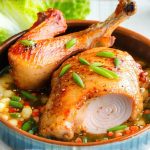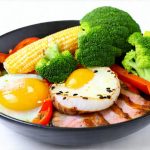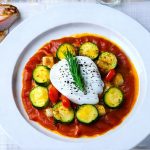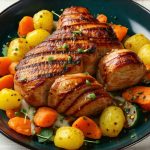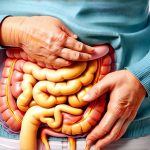Dealing with both Gastroesophageal Reflux Disease (GERD) and Irritable Bowel Syndrome (IBS) simultaneously can feel like navigating a dietary minefield. Many foods that trigger one condition may exacerbate the other, making meal planning incredibly challenging. It’s not about strict deprivation; it’s about smart choices and understanding how different foods impact your individual system. This article will explore dinner options designed to minimize symptoms for those managing both conditions, focusing on gentle digestion and reducing irritation. We aim to provide practical ideas you can incorporate into your evening meals, promoting comfort and well-being.
The key to successful dining with GERD and IBS lies in identifying personal triggers. What bothers one person may not affect another. Keeping a food diary can be immensely helpful in pinpointing problematic ingredients. Beyond specific foods, portion sizes also matter – larger meals are more likely to trigger reflux or IBS symptoms. Prioritizing mindful eating, chewing thoroughly, and avoiding late-night snacking will further support digestive health.
Understanding the Overlap & Dietary Considerations
GERD primarily involves stomach acid flowing back into the esophagus, causing heartburn and potentially damaging the esophageal lining. IBS, on the other hand, affects the large intestine, leading to abdominal pain, bloating, gas, diarrhea, or constipation. The overlap arises because many foods that worsen GERD (like fatty or fried foods) can also trigger IBS symptoms, and vice versa. A common thread is avoiding highly processed foods which often contain ingredients known to aggravate both conditions.
Dietary strategies for both conditions share similarities. Reducing fat intake minimizes acid reflux risk and eases digestion in the gut. Fiber plays a crucial role – soluble fiber can be particularly beneficial for IBS, while excessive insoluble fiber might worsen symptoms for some. Staying hydrated is also vital, as water aids digestion and helps prevent constipation. However, individuals with IBS may need to be mindful of fluid intake around meals to avoid bloating.
Finally, certain foods are known irritants for both GERD and IBS; these include caffeine, alcohol, carbonated beverages, spicy foods, citrus fruits/juices, tomatoes/tomato-based products, chocolate, and peppermint. These should generally be limited or avoided depending on individual tolerance.
Dinner Meal Ideas: Gentle & Soothing Options
When planning your dinner menu, lean protein sources are a great starting point. Baked chicken breast, turkey meatballs (made with minimal spices), or fish (salmon is rich in omega-3s and less likely to trigger reflux) are excellent choices. Pair these proteins with easily digestible carbohydrates like quinoa, brown rice, or sweet potatoes. These options provide sustained energy without overwhelming the digestive system.
Vegetables should be a staple of every dinner, but choose wisely. Steamed green beans, carrots, zucchini, and spinach are generally well-tolerated. Avoid cruciferous vegetables (broccoli, cauliflower, cabbage) as they can produce gas in some individuals with IBS. Cooking methods matter too; steaming or baking is preferable to frying. Consider incorporating herbs like ginger – it has anti-inflammatory properties and can aid digestion. A light drizzle of olive oil for flavor is acceptable, but avoid excessive amounts.
Building a GERD & IBS-Friendly Plate
A balanced plate should ideally consist of roughly 40% lean protein, 30% complex carbohydrates, and 30% low-FODMAP vegetables. Low-FODMAP diets are often recommended for managing IBS symptoms; FODMAPs are fermentable carbohydrates that can trigger digestive upset in sensitive individuals. Resources like Monash University’s app (Monash University FODMAP diet) provide detailed information on FODMAP content in various foods.
Portion control is vital. Smaller, more frequent meals are generally better tolerated than large portions. Eating slowly and chewing thoroughly will also aid digestion and reduce the risk of heartburn or bloating. Avoid lying down immediately after eating; allow at least two to three hours for your stomach to empty before reclining. This helps prevent acid reflux.
Sample Dinner Recipes
Baked Salmon with Quinoa & Steamed Green Beans: Season salmon fillets with a little dill and lemon juice (use cautiously if citrus is a trigger). Bake until cooked through. Serve with quinoa and steamed green beans.
Turkey Meatballs with Sweet Potato Mash & Zucchini: Make turkey meatballs using lean ground turkey, breadcrumbs, and mild seasonings. Steam or bake the meatballs. Pair them with mashed sweet potato (avoid butter or cream) and steamed zucchini slices.
Chicken Breast with Brown Rice & Carrots: Bake a chicken breast seasoned with herbs. Serve alongside brown rice and steamed carrots. A small side salad with lettuce and cucumber can also be included, using a vinegar-based dressing instead of creamy options.
Further Considerations for Symptom Management
Beyond specific food choices, consider the timing of your meals. Eating dinner at least 2-3 hours before bedtime allows sufficient time for digestion to occur, minimizing reflux symptoms during sleep. Maintaining a healthy weight can also significantly reduce GERD symptoms, as excess abdominal pressure contributes to acid reflux. Regular physical activity, combined with a balanced diet, supports overall digestive health and well-being.
Remember that consistency is key. Implementing these dietary changes consistently will yield the best results. It’s also important to note that managing both GERD and IBS requires a personalized approach; what works for one person may not work for another. Be patient with yourself, track your symptoms, and adjust your diet accordingly.
Ultimately, navigating dinner meals when you have both GERD and IBS is about finding a balance between enjoying food and minimizing discomfort. It’s a process of learning what your body can tolerate and making informed choices that support your digestive health.



